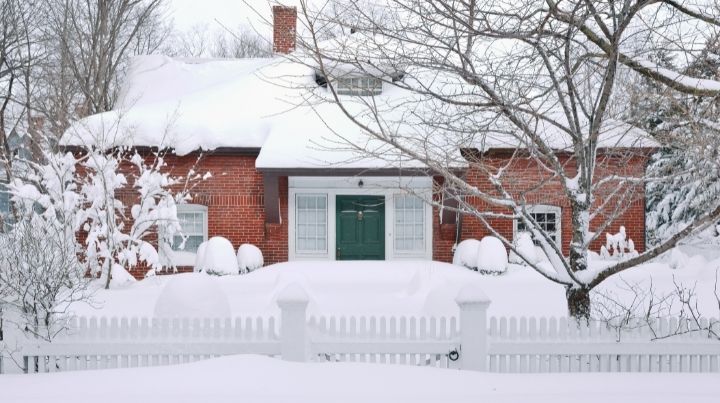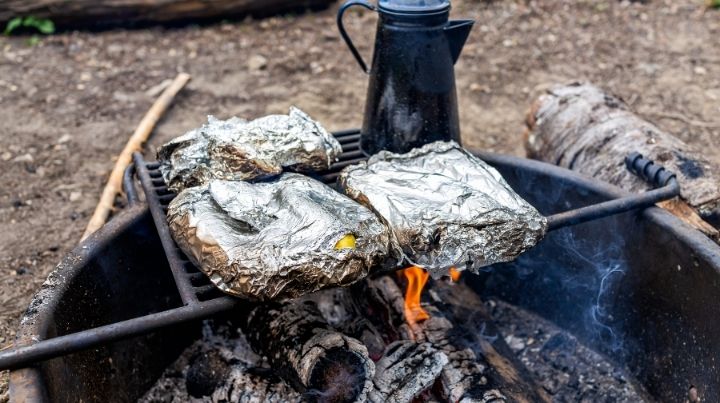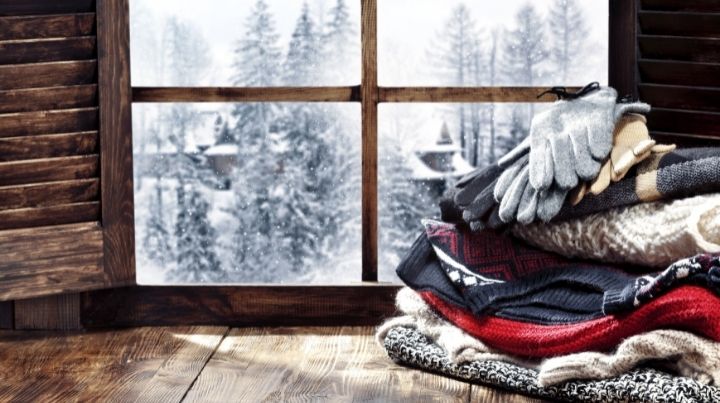What Should Preppers Have in Their Winter Emergency Kit?

The wind is howling, the snow is blowing, the weather is frigid, and suddenly, the power goes out. But it’s okay. Your winter emergency kit prepares you for whatever Mother Nature brings you.
We’ve gone over the basics for preparedness but cold-weather emergencies require a few additional considerations. That’s why, if you live in a cold climate, you should have a winter emergency kit.
Your Winter Emergency Kit MUST Include a Way to Stay Warm
Depending on where you live, a way to stay warm during a winter power outage could mean the difference between life and death. If you’re lucky, you have backup heat built-in with a woodstove or fireplace. If not, there are other options to help you and your family stay warm.
- A Mr. Buddy Propane Heater: This is one of the only propane heaters that is rated as safe for indoor use. You can also get an adapter so you can connect your Mr. Buddy Heater to a barbecue-sized propane tank.
- A Kerosene Heater: There are a variety of kerosene heaters that are safe for indoor use. Be sure that you select one with an automatic shut-off if it gets knocked over. As well, make sure that it doesn’t have a fan that requires electricity to run.
- Close Off One Room: If you don’t have a secondary heat source, you may be able to deal with it for a few days by closing everyone into one room and hanging quilts in doorways and windows to conserve body heat. Use kerosene lamps and candles for light to add a little more ambient heat, and dress warmly, including hats, scarves, and gloves.
- A Tent Indoors: If you have children, you can make a winter power outage more fun by setting up a tent in the room that you’ve closed off. Get everyone into a cozy sleeping bag and the entire family can crawl into the tent and share body heat.
- Use Solar Gain: If the weather is sunny, open the curtains and let the sunshine in to add some additional heat. As the day ends, close the curtains to conserve as much solar gain as possible.
Don’t forget to stock plenty of fuel for whatever your secondary heating method is, whether that is wood heat, propane, or kerosene.
A Way to Cook or Heat Food
A hot meal or drink can go a long way to lift your spirits during a winter power outage. It’s important to have a safe way to either cook or at the very least, boil some water.
If your kitchen stove is gas, it will probably work during a power outage. One exception to this is if your gas stove has electric ignition. If it does, learn in advance how to safely light your stove manually.
You can use a barbecue outdoors to cook dinner and make some coffee or cocoa to pick up people’s moods. While you’re out there, be sure to boil some extra water and pour it into thermoses so you can have hot water later without going outside.
Again, as with heat, if you’re really lucky, you will have a woodstove or fireplace. These provide multiple opportunities for cooking food.
Another low-tech option that is safe to use indoors is a small heater that uses a tealight candle to keep food and drinks warm. Here’s one example.
Chafing dishes with diethylene fuel canisters can also heat food efficiently.
Every Winter Emergency Kit Should Have a Carbon Monoxide Alarm
Any time you are using the items listed above for heating and cooking, you are at risk for carbon monoxide poisoning.
Many experts call carbon monoxide (CO) the silent killer.
‘Often called a silent killer, CO is an invisible, odorless, colorless gas created when fuels, such as gasoline, wood, coal, natural gas, propane, oil and methane, burn incompletely.
CO enters the body through breathing. CO poisoning can be confused with flu symptoms, food poisoning and other illnesses. Some symptoms include shortness of breath, nausea, dizziness, light headedness or headaches.
Everyone is at risk for CO poisoning, but infants, pregnant women and people with physical conditions that limit their ability to use oxygen, such as emphysema, asthma or heart disease, can be more severely affected by low concentrations of CO than healthy adults. High levels of CO can be fatal for anyone, causing death within minutes.’ (source)
The good news is that it is reasonably inexpensive to protect your family. You can purchase a carbon monoxide alarm that is either battery-powered or has a battery backup for around $20.
Make sure to add this potentially life-saving, inexpensive gadget to your winter emergency kit.
Basic Snow Removal Equipment
Every winter emergency kit should have some basic snow removal equipment. Snow shovels and ice-melting salt can help you clear a safe path to your door and keep your sidewalk free of slippery spots. If you have pets, be sure to look for ice-melting salt that is friendly to tender paws.
A Water Supply
Cold weather can cause pipes to freeze, or even worse, burst, which means you may be stuck at home with no running water. It’s important to have an emergency water supply for your winter emergency kit for this very reason.
Keep your water supply in a place where it’s less likely to freeze. Don’t use up your valuable fuel melting water – especially if it is stored in plastic containers.
Appropriate Winter Outerwear
Even if you don’t plan to leave the house, having good quality winter outerwear is very important. If something happens (like your carbon monoxide detector sounding the alarm) and you have to go outdoors to safety, appropriate winter attire can prevent you from suffering a cold-related injury. Winter outwear should include a combination of the following:
- A warm coat
- Snow pants
- Insulated coveralls
- Waterproof gloves
- Waterproof footwear
- Extra socks
- A hat that covers your ears
- A scarf to cover your neck and the lower part of your face
What’s In Your Winter Emergency Kit?
Do you live in a cold climate? If so, what is in your winter emergency kit? Did we leave out any of the basics? Let’s talk about it in the comments.
Don't Miss Out!
Join the thousands of people who rely on Mind4Survival preparedness advice by subscribing to our FREE newsletter.
- Practical preparedness information
- Zero Spam
- < 0.25% of people unsubscribe




Join Mind4Survival!
Stay informed by joining the Mind4Survival! 100% Secure! 0% Spam!
Follow Us!
Affiliate Disclosure
Mind4Survival is a free, reader-supported information resource. If you make a purchase through our link, we may, at no cost to you, receive an affiliate commission.



